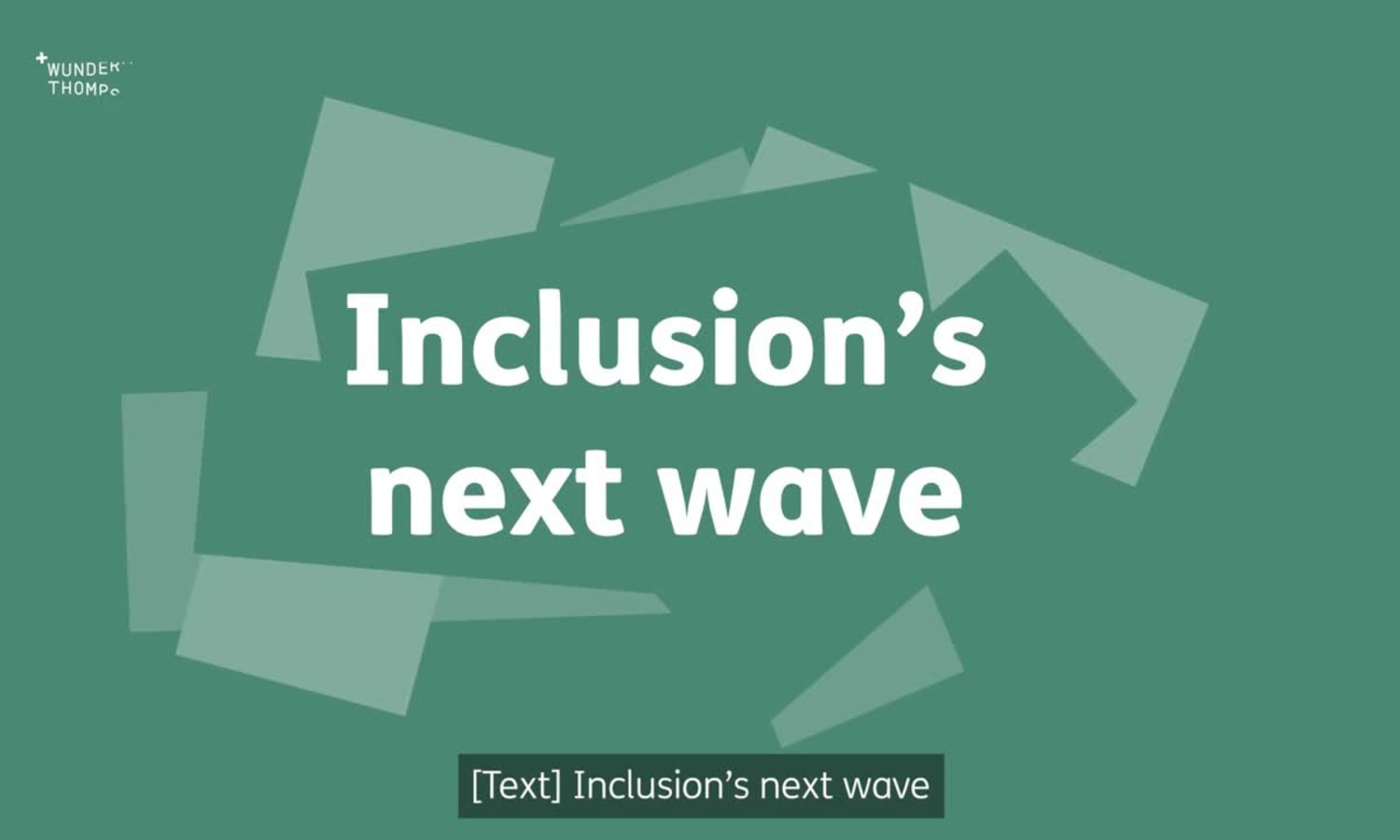Wunderman Thompson Intelligence presents “Inclusion’s Next Wave,” a global trend report outlining the driving forces propelling the next wave of inclusion.
A new trend report exploring emerging trends in inclusion, revealing a powerful role for brands.
Download "Inclusion’s Next Wave"
Screen reader-compatible PDF now available. Optimized for Adobe Acrobat's Read Out Loud tool.
Meaningful and authentic action on inclusion is now a brand imperative. A grassroots push from historically marginalized communities (who are increasingly willing to self-identify as such) is aligning with rising employee activism and consumer expectations.

In a global survey for Wunderman Thompson, 90% say equality is now everyone’s business, and 75% say companies and brands must play a role in solving big societal challenges such as equality and social justice. And consumers will reward brands that deliver, with 66% of people agreeing that they are more inclined to buy from companies who speak out on issues of equality and inclusion.

The report unpacks the emerging consumer trends and shares implications for brands and businesses, building on original research conducted by Wunderman Thompson Data in Brazil, China, Japan, the UK and the US and exclusive interviews with 18 experts, global ethnographic interviews with 18 people from marginalized communities, case studies and brand takeaways.
New inclusion trends include:
Intersectional Storytelling: Diversity both on-screen and behind the camera is shaping a new era of inclusive storytelling
Wajahat Ali
Columnist for the Daily Beast and author of Go Back To Where You Came From
Inclusivepreneurs: Entrepreneurs from underserved communities are innovating for themselves
Christina Mallon
Director of inclusive design, Microsoft

Mass inclusive design: Accessible products and services are hitting the mainstream as brands target mass distribution
Meta-inclusion: As we build new virtual worlds, brands have an unprecedented opportunity to build in inclusion, accessibility and equity from the start
Revolutionary Rest: Exhausted from constantly fighting their corner, marginalized communities are giving themselves permission to focus on rest

Survey findings include:
- 82% of global respondents feel that actions on inclusion and equality should be integrated throughout the entire business
- 63% are more likely to buy from brands that made more effort to represent people like them
- 60% agree that brands who do not deliver on inclusion will become irrelevant
Download "Inclusion’s Next Wave"
Screen reader-compatible PDF now available. Optimized for Adobe Acrobat's Read Out Loud tool.
Inclusion's next wave: Accessible video options



Inclusion's Next Wave Teaser: Transcript
Main image of In The Fathoms Below 4 by Charlie French.
Please provide your contact information to continue.
Related Content


